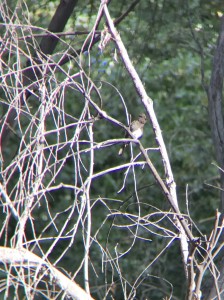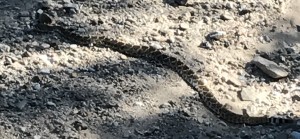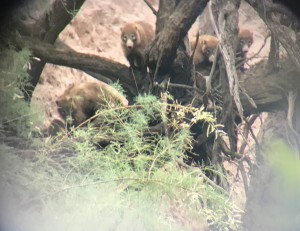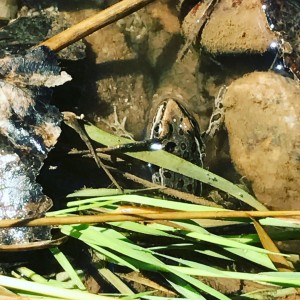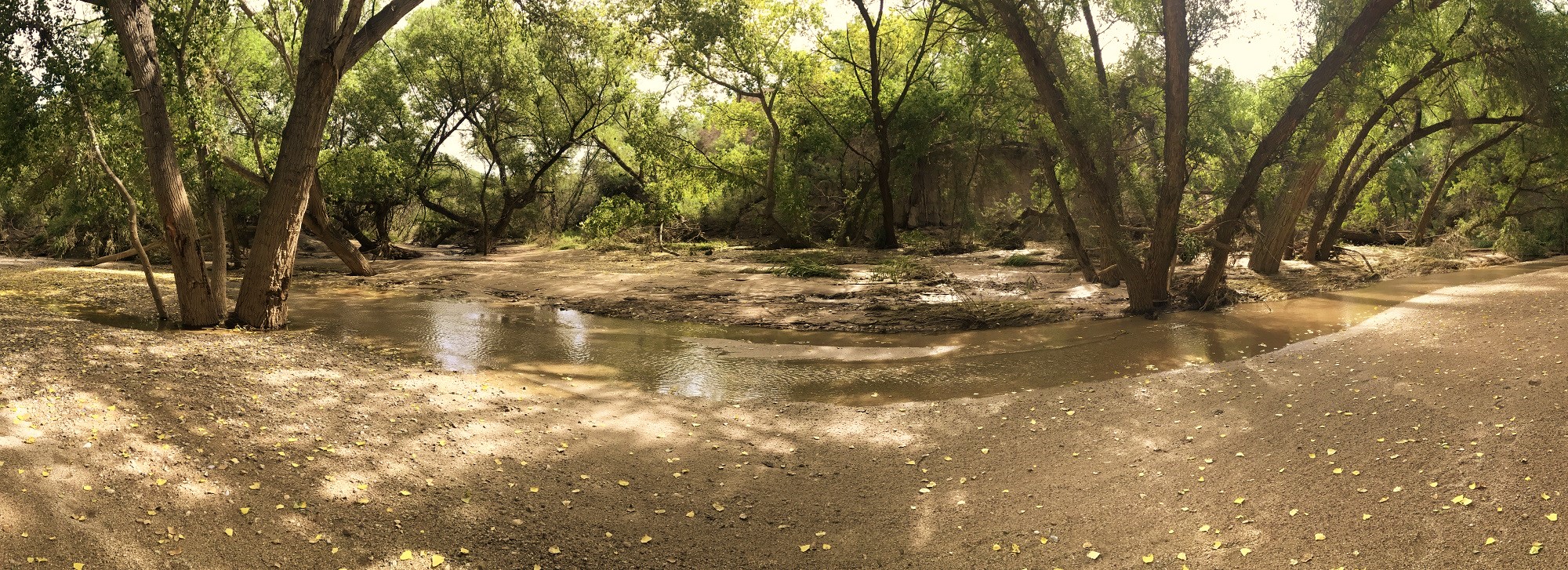 Directions and More Information about Cienega Creek
Directions and More Information about Cienega Creek
On a cool monsoon morning Tucson Audubon team has arrived at Cienegas Creek in Vail to conduct a Yellow-billed Cuckoo (YBCU) survey for the Pima County. We used the Gabe Zimmerman Davidson Canyon Trailhead parking lot as the gathering point to discuss our plan. You do not need a permit to hike the Arizona trail which runs through there, but in order to hike the Cienega Creek Natural Preserve you’d have to request a permit here, which is free. Our team, of course, had special permission to survey on the creek.
After we had figured out our next steps we divided up so that each individual would have their own stretch of the creek. I got the eastern-most part, so I had to drive down the Marsh Station road until I reached a small adjacent dirt road which took me to the train tracks running parallel to the creek.
The banks of the creek are quite steep, so you can’t enter it just anywhere. I had to walk along the tracks for a while until a known entrance point marked on my GPS. Along the way I had to be careful not to step on what I at first assumed to be grasshoppers jumping from under my feet. When I stopped to observe them, I realized that they were baby spadefoot toads, the size of my fingernail! They were far from the creek but there were enough puddles for them after the rains. Soon I had to stop and shield my ears from the passing train which was only a few feet away from me. I stayed off the tracks while walking to my destination just in case, but the tracks start to vibrate audibly with an approaching train to let me know to step back further.
Soon I had reached my entrance point so I crossed the tracks and found a good place to get between dense vegetation and into the creek bed. The area gave off a serene feeling. The creek was running gently, trees swayed quietly, and the birds were chirping away. This was my starting point for the survey. It was a cool 70 degrees with a slight breeze in the canopy. I recorded the weather and played my first YBCU playback. After no indication of a bird there I continued west about 100 meters to try again. As I was walking I came across a fallen tree which sprawled across the wash. I jumped off the other side onto a seemingly normal ground. Quickly, I sunk into the wet sand half way up my shin. “The quicksand they were warning me about!”- I thought as I freed my foot. I considered it a joke when someone told me this, but it is true after all. For the rest of the survey I tried to be careful where I step but there was no escaping it at times.
As I continued my survey I encountered more and more cuckoos. This was a true haven for them. They are quite a secretive species so even when I heard them answering to my contact playback sounding so close to me, I still was not always able to see them. They like to turn their white bellies away from you so their grey backs blend in with the leaves surrounding them. We ensure that we don’t count the same bird twice by walking at least 300 meters from a positive detection to leave their assumed territory. Another predominant species there were Yellow-breasted Chats which were deafening with their croaks, whistles and what sounded almost like meowing. Other species I encountered include: Gray Hawk, Zone-tailed Hawk, Ladder-backed Woodpecker, Black Phoebe, Great-horned Owl, Vermillion Flycatcher, Abert’s Towhee, Phainopepla, Bell’s Vireo, Blue Grosbeak, Summer Tanager, Common Yellowthroat, Black-headed Grosbeak, Northern Cardinal, Bronzed Cowbird among many others.
At one point I saw an owl fly away ahead of me. In the same area it left I saw a Great-horned Owl youngling sitting high up in the tree watching me intently. It did not move so I was able to take a good picture through my binoculars. I continued down the creek. Surface water was flowing most of the way, sometimes disappearing underground creating deceptive “quicksand” areas. Muddy areas revealed what happens when no one is around: fresh coati footprints were seen leading from bases of trees toward the creek .
Soon I reached an open dry area which seemed out of place. This area was surrounded by mesquite trees barely hanging on to the banks seemingly being pulled horizontally toward the creek. Out of nowhere two Zone-tailed Hawks started circling low above me making the most disturbing screeching noises. I was too close to their nest. They sure do a great job at intimidating you away from their territory. In later surveys we were able to confirm a nest with two chicks in that area. They followed me a bit as I walked away, later leaving me alone.
A few hundred meters later I stumbled upon what seemed like a large stick in the wash. Turns out it was a Diamondback Rattlesnake sprawled out almost all the way across, motionless. Not knowing exactly how it would react to my walking next to it I decided to climb up the 3-foot bank (thankfully low enough at this point) to walk around it.
Finally, I reached the surface water again surrounded by a tall canopy. Out of the corner of my eye I noticed movement in trees ahead of me. No binoculars needed as I saw two White-nosed coatis running down a tree trunk slanting diagonally to the creek. As I watched them run to the opposite bank I realized that there are a group of at least 20 coatis consisting of adults with young waiting for them there. They were jumping from branch to branch seeming like monkeys with their long tails swinging behind them. I am not sure how many more were on top of that bank-side not visible to me, but even the ones I could see were more than I have ever encountered. Truly an unforgettable experience.
As I continued my survey I kept looking up into the canopy hoping to see more coati. Instead I stumbled upon a basketball-sized bee hive right above my head. No need to say I hurried away from there. Shortly I reached a deep pool of water with a small school of fish. The pool took up the whole path with a cliff wall to one side and a thicket to the other. Not being a rock climber or a strong swimmer, I decided to cross the dense vegetation. A few scratches later I got on the other side of the pool and decided to do another survey point. That’s when I realized I no longer had my GPS. I had to cross the thicket again. Thankfully I saw my GPS lying on the ground close by. I went back to my route. This stretch of the creek was running with even more water. Cattails were surrounding each side of the creek with multiple Lowland Leopard frogs cooling off in the stream.
At the end of my survey I realized I didn’t stumble across a single person the whole way. I did see some footprints alongside with dog prints but I never saw anyone in each of my other surveys either. By the end of the day I had a total of 5 YBCU observations in my stretch of the creek which is quite good considering their large territory sizes.
Cienega Creek is truly a unique place located so close to the busy urban area of Tucson. It provides precious habitat to so many different animals. A true oasis.


